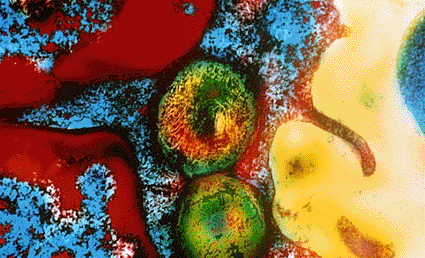Clinical Diagnostic Test Identifies Range of Mitochondrial Disorders
By LabMedica International staff writers
Posted on 09 Nov 2009
A clinical diagnostic test has been developed for the early identification of a wide range of mitochondrial disorders.Posted on 09 Nov 2009
Mutations to one of the mitochondrial genes, or to a number of nuclear genes with roles in mitochondrial function, can cause diseases, which have very similar symptoms, making them difficult to diagnose and treat.

Image: Colored transmission electron micrograph (TEM) of a section through the membrane of a human cell showing two mitochondria (Photo courtesy of BSIP Meullemiestre / SPL).
Scientists at the Seattle Children's Research Institute (WA, USA) and the Genome Sciences and Pediatrics Departments of the University of Washington (Seattle, WA, USA) created a molecular diagnostic tool that uses targeted genetic sequencing to screen patient's DNA for variations in 362 genes that have been associated with mitochondrial disease or mitochondrial function.
Scientists tested the tool by using it to screen three DNA samples. They found that the new method was able to accurately identify the mutation underlying each patient's condition. The large number of candidate genes examined is likely to increase sensitivity for identifying previously unknown genes responsible for mitochondrial disorders.
"Early and effective diagnosis [of mitochondrial disorders] is crucial for permitting appropriate management and accurate counseling," said scientists Jay Shendure and Sihoun Hahn. "Mitochondrial diseases affect as many as 1 in 5,000 children; however diagnosis is notoriously difficult due to the huge number of genes potentially responsible for these disorders. For these reasons, some patients may remain undiagnosed and even die of untreated disease" according to Dr. Hahn. He added, "Our study indicates that the use of next generation sequencing technology holds great promise as a tool for screening mitochondrial disorders."
The study was published in the journal Genome Medicine on October 23, 2009.
Related Links:
Seattle Children's Research Institute
Department of Pediatrics of the University of Washington School of Medicine














